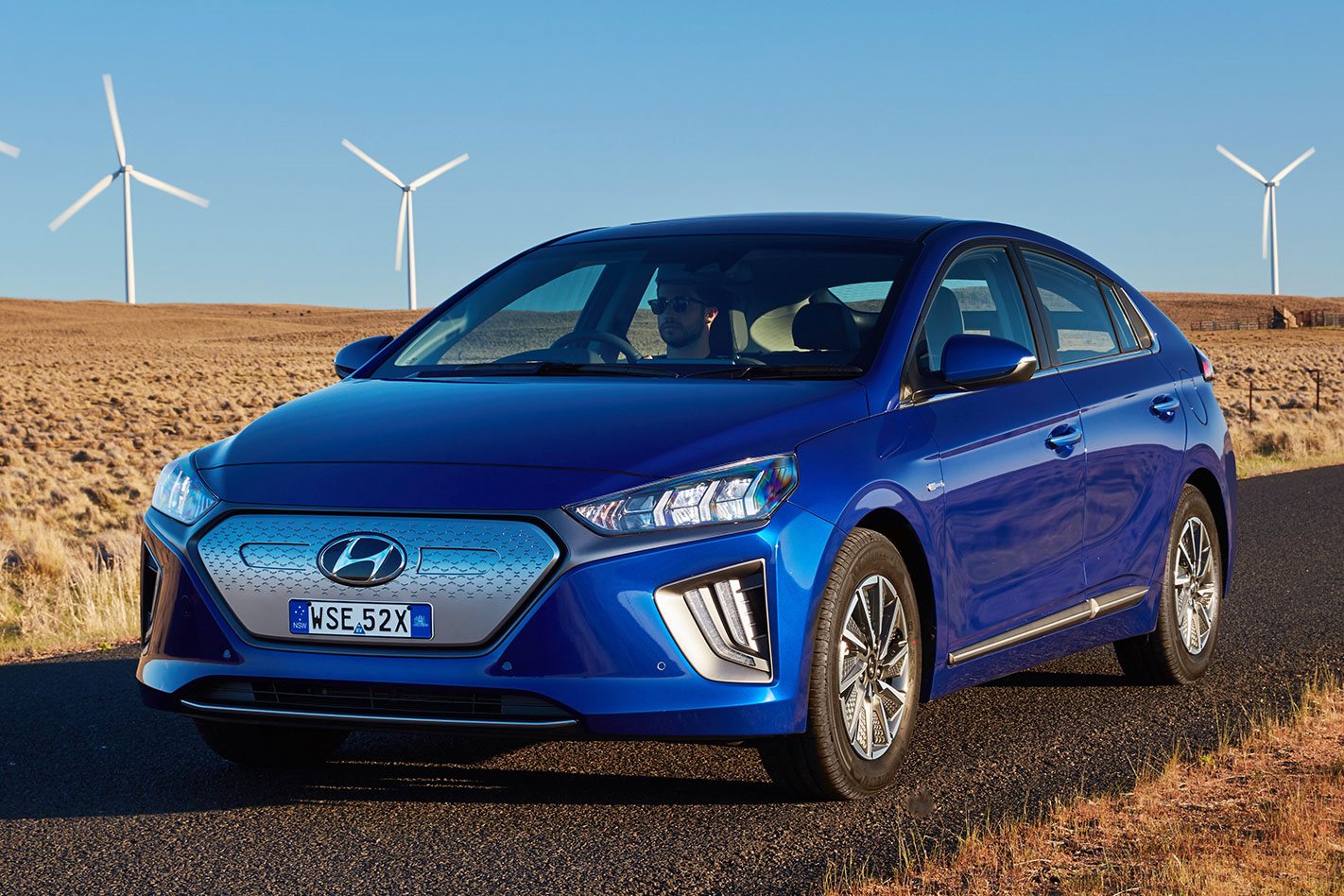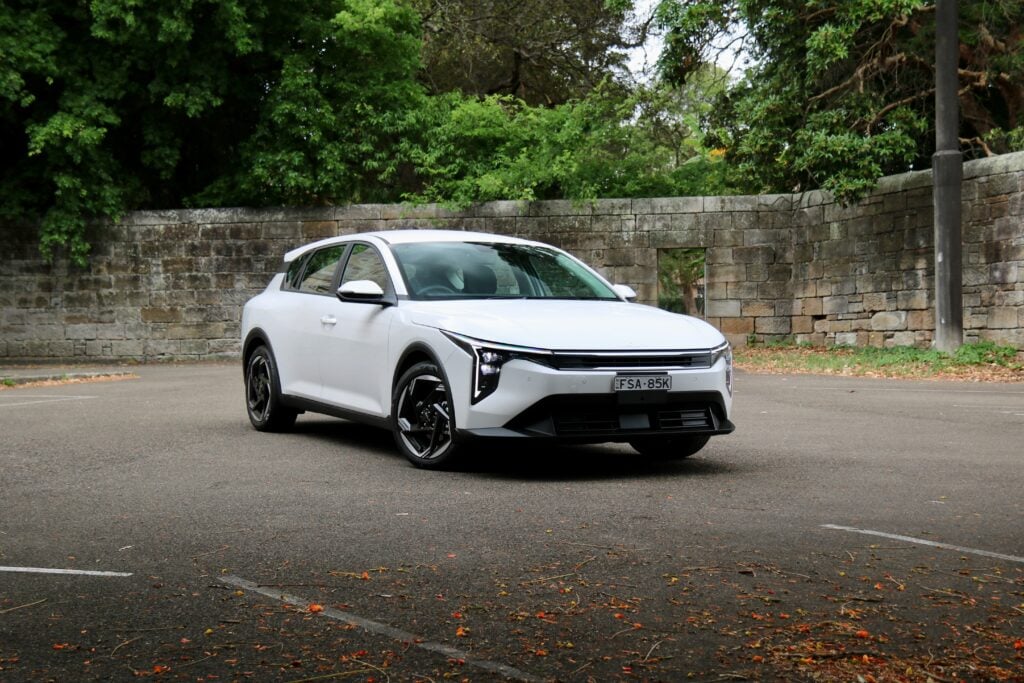Things we like
- Much improved interior design and materials
- Comprehensive safety and convenience equipment
- Less suspension noise
- Improved range and performance of Electric model
Not so much
- Steering feel
- Dynamics of Hybrid and PHEV models adequate only
- Prices are up
The Wheels Verdict: If it is broke, then do fix it. That seems to be Hyundai’s mantra with its three-model IONIQ line-up. Okay, ‘broke’ is too strong a term, but the Korean company has applied effective upgrades to the areas that needed them most, and has succeeded in pulling its eco warrior up to speed with the rest of the local line-up. The prices have climbed, but the value equation is stronger, especially with the pure-EV Electric model, which now drives further and better; good enough to be a more compelling offering, we reckon, than Nissan’s Leaf.
RIVALS
Nissan Leaf; Toyota Prius; Toyota Camry Hybrid
WHAT IS THE HYUNDAI IONIQ?
A five-door medium-sized liftback offered with three distinct powertrain choices: a hybrid which recharges itself as you drive, a plug-in hybrid that will take you around 45km on electric power alone, then back that up with its petrol engine, and a pure EV model.
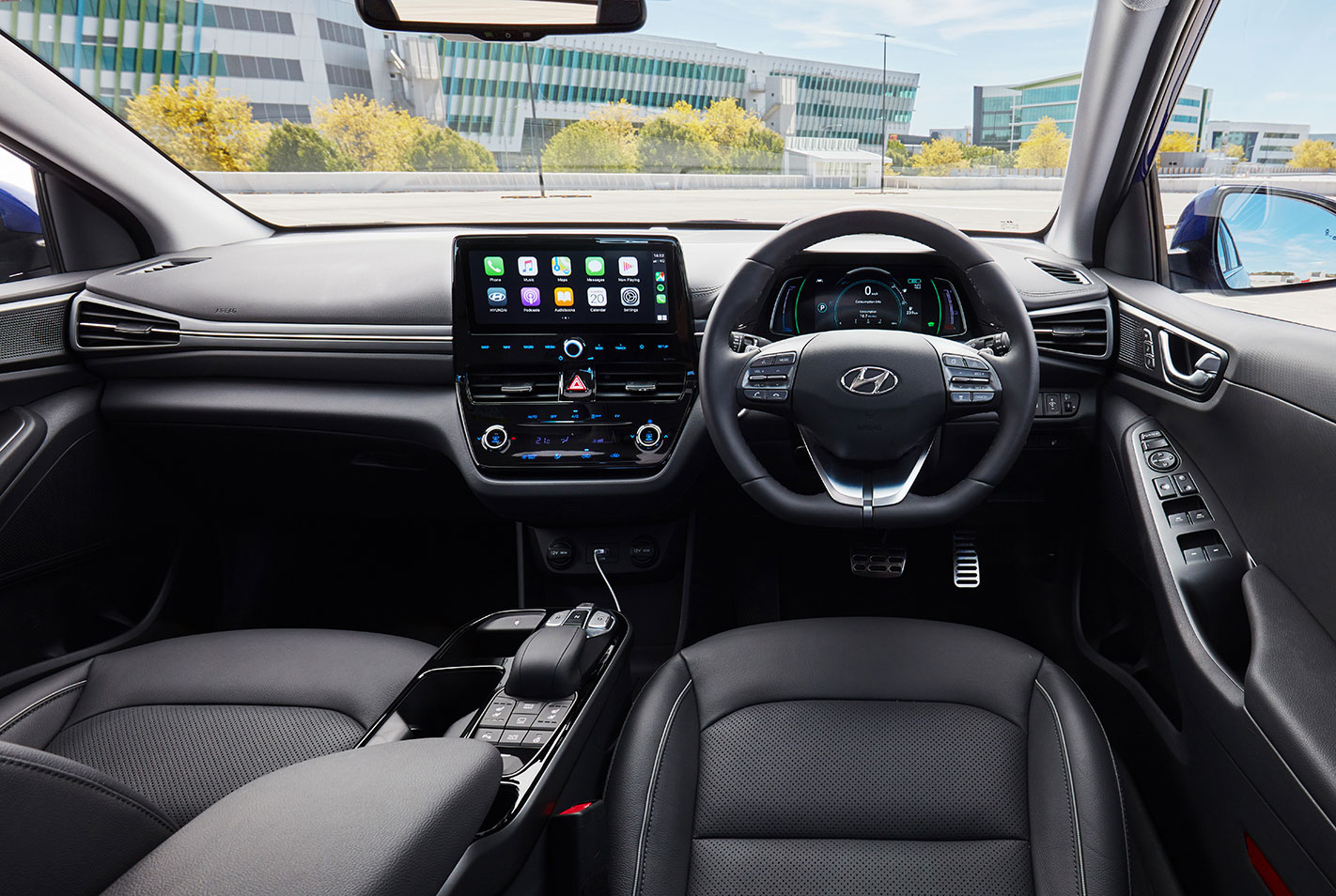
WHY WE’RE TESTING IT
The IONIQ line-up was bundled out of our Car of the Year Testing (Feb ’19) in the first round, despite making an impression on the judges for ease of operation and the diversity of choice it offered customers looking for an economical, low-emissions vehicle. This launch drive out of Sydney was a chance to see how effectively Hyundai has targeted the areas most in need of attention.
THE WHEELS REVIEW
When Hyundai first launched its three-powertrain IONIQ range in 2018, some observers suggested this was a bet-hedging exercise by the Australian arm of the South Korean giant, unsure of which ‘green car’ solution would prove most popular with Aussie buyers.
For this MY2020 model update, the company has continued with the three-prong approach, which would seem to indicate there’s genuine sales validity to a line-up that sees one core model offered as conventional Hybrid, Plug-in Hybrid and Electric.
“Freedom of Choice; is what you got” sang flowerpot-hat-wearing electro-pop band Devo back in 1980. It’s safe to assume not a lot of Devo gets played at, say, hybrid-centric Toyota.
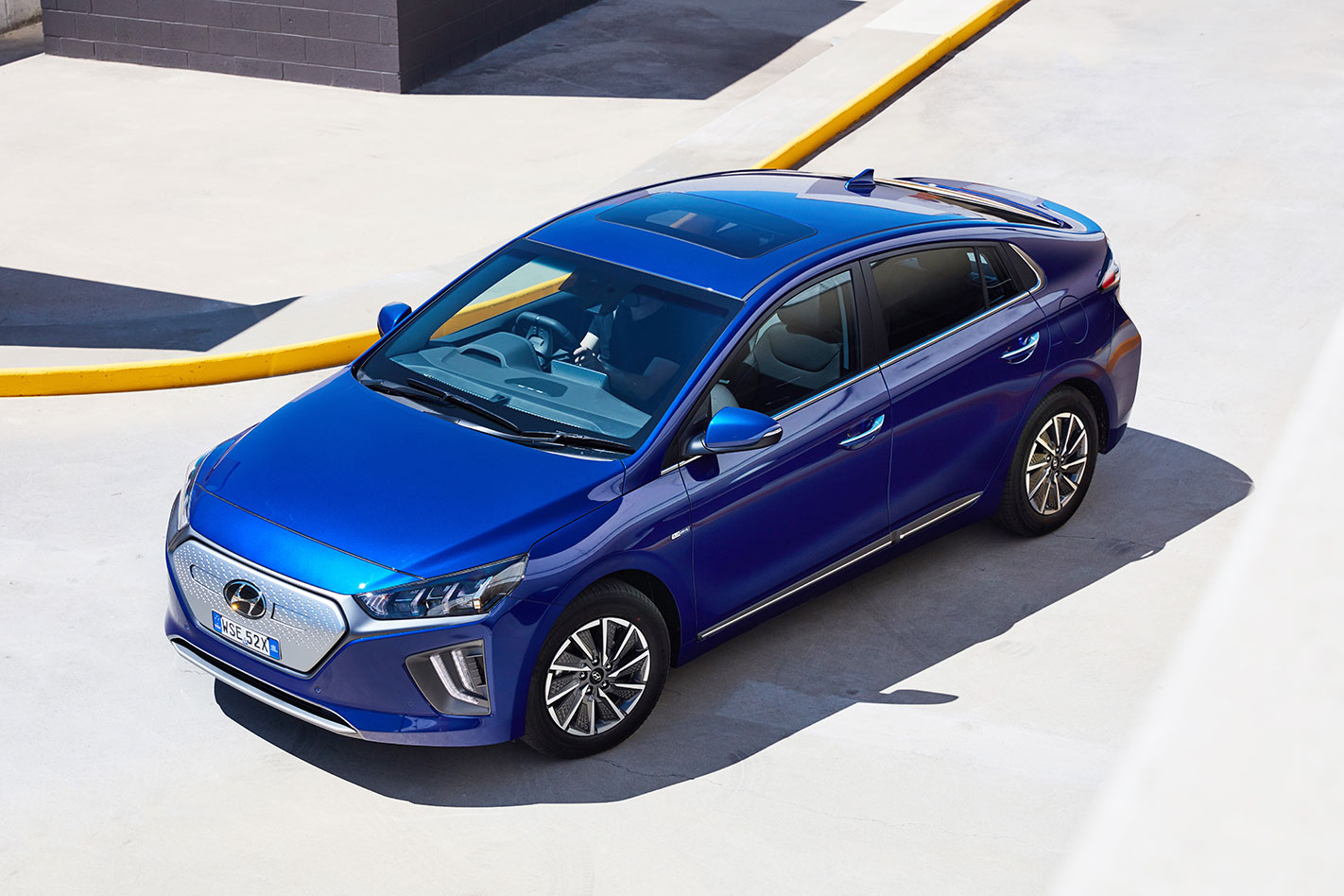
The model line-up remains as originally established: a mid-spec (Elite) and top-spec (Premium) is available for each of the three powertrain alternatives, making for a six-strong range.
All variants benefit from vastly improved interior design and trim materials, more safety and convenience equipment, and a better multimedia system, but it’s the battery EV that see the most significant hardware upgrades.
But first to the conventional Hybrid, which we didn’t get the chance to drive. Suffice to say that it continues to use a comparatively small 1.56kWh lithium-ion battery that relies on regeneration and engine operation to recharge it, to provide power to the single 32kW/170Nm electric motor. Teamed with the carry-over 1.6-litre atmo four running in the Atkinson cycle, the combined system outputs of 104kW and 265Nm remain unchanged, as does the official 3.9L/100km combined consumption figure. The price hike to both models (Elite now $34,790, up $800; Premium $39,990, up $1000) now sees them closer, but still cheaper, compared to direct rival Prius ($36,440 and $43,990.)

The Plug-in model’s motor is stronger than that in the conventional Hybrid, good for 44kW/170Nm, and is fed by a much larger battery (still 8.9kWh) but continues to only be able to be charged by AC power, rather than DC fast-charging. This means you’d really only charge it at home from a wallbox, as opposed to having the option to whack it into a fast-charger while out and about. Still, its real-world EV-only range, which we found to be around 47km, will be adequate for plenty of drivers to complete daily driving duties without burning fuel.
One caveat, however, is that even if you’ve selected pure-EV mode, and demand wide-open throttle for, say, an overtaking move, the petrol motor will kick in to deliver maximum combined output. Retaining petrol-dodging parsimony therefore requires reasonably restrained driving style, which coincidently suits the chassis tune.
Despite being fettled to suit Aussie conditions, the Plug-in is not exactly a shining example of backroad damping composure and sophistication. The steering has a slight springiness to its self-centring action, and the rebound control can quickly get a bit flustered if you start to indulge yourself.
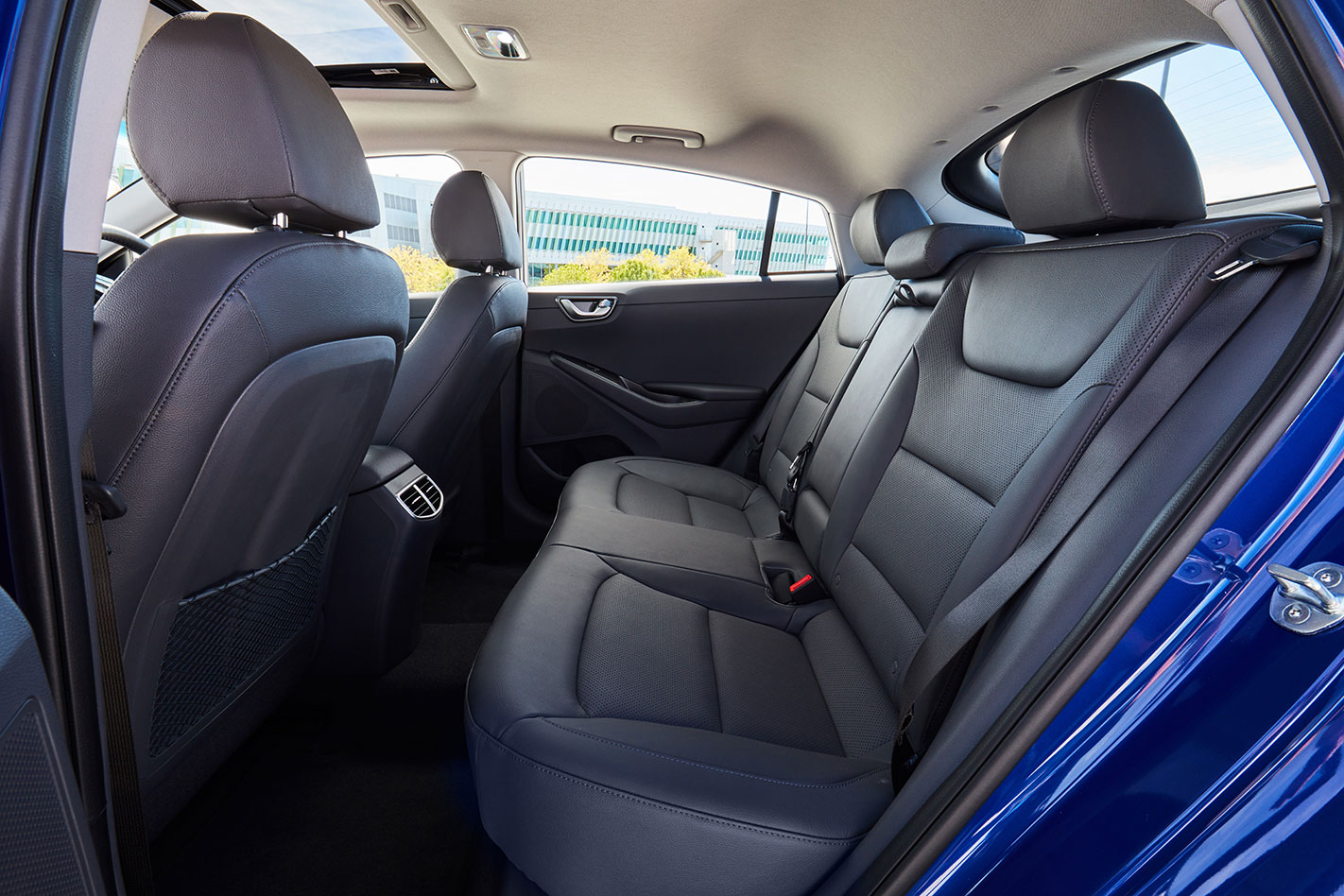
Still, there’s more driver involvement on offer thanks to the inclusion of adjustable regenerative braking on both the Hybrid and Plug-in, a feature previously reserved for the EV. In normal driving the steering wheel-mounted paddleshifters control the amount of regenerative braking in three stages, but, cleverly, move the gear selector into its manual mode and the paddleshifters allow gear selection of the six-speed dual-clutch ’box.
Also positive is the improvement to suspension noise compared to the original. Says HMCA Product Planning and Development Specialist, Tim Rodgers: “In a conventional car, there are a lot of suspension noises that are masked by the powertrain. We had to place particular attention on refinement to ensure IONIQ delivers a consistent, comfortable, quiet experience.”
We can’t tell you exactly what changes have been made, but the new model is appreciably quieter, especially in the rear, than the original.
But given that nearly half of IONIQ sales to date have been the EV, it’s fitting that this is the variant that brings the most significant gains in terms of range and performance.
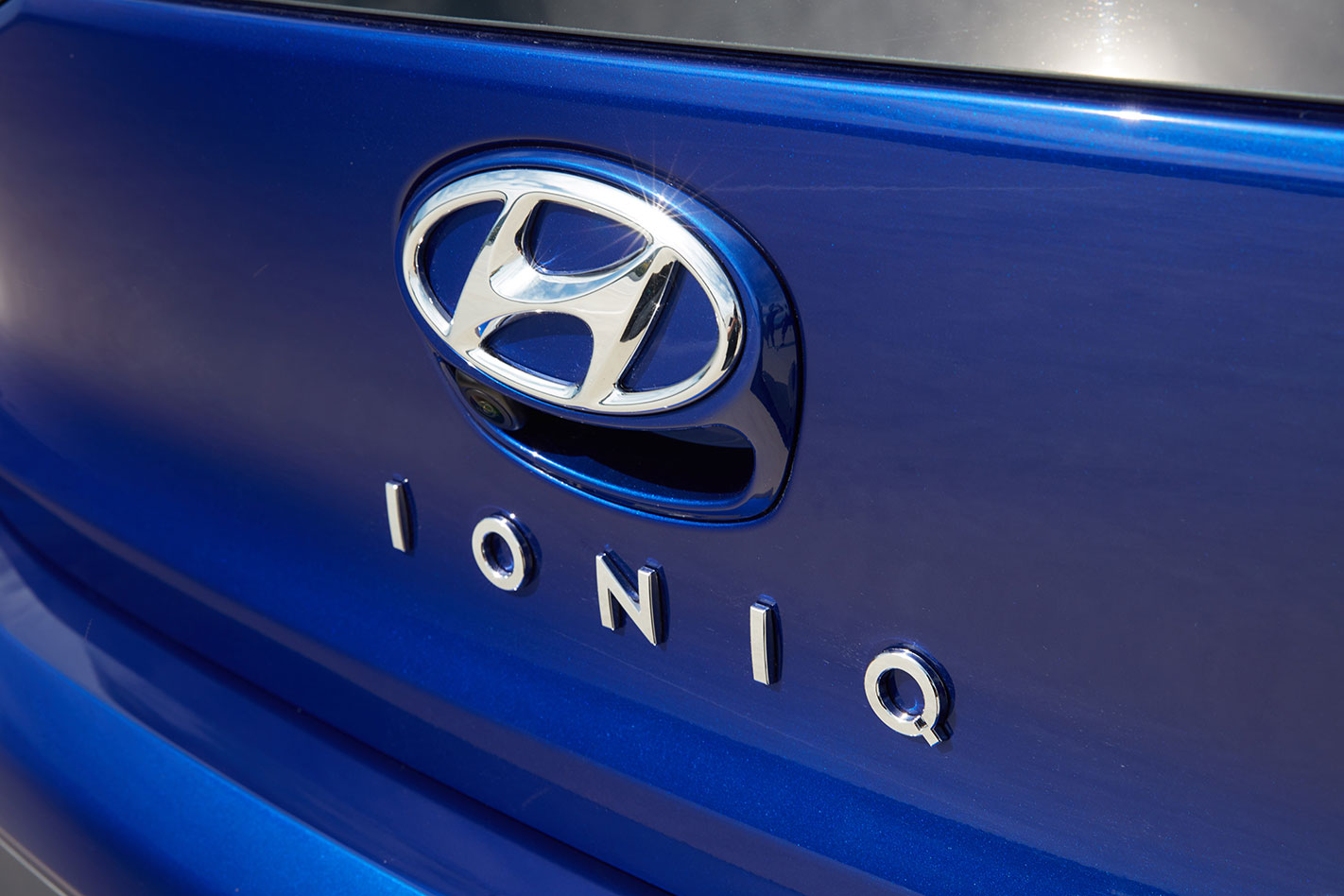
The outgoing model’s 88kW motor has been upgraded to a 100kW unit, while the original’s 28kWh air-cooled battery has been ditched in favour of a higher-density, 38.3kWh liquid-cooled pack. Range jumps from 204km (on the WLTP test) to 311km, although we were on track to achieve just under 300km during our drive.
The jump of 37 percent in battery capacity does bring an increase to charging time, which Hyundai says runs to 54 minutes on a 100kW charger when charging from flat to 80 percent. Given that no-one (at least deliberately) recharges on a public charger from zero, we’d expect a more likely real-world time from 15-80 percent of around 45 minutes. Further, domestic charging speed has been improved with an upgrade to the onboard AC charger. It can now deliver 7.2kW, meaning overnight charging from a domestic powerpoint will be around six hours, much less with a wallbox charger.
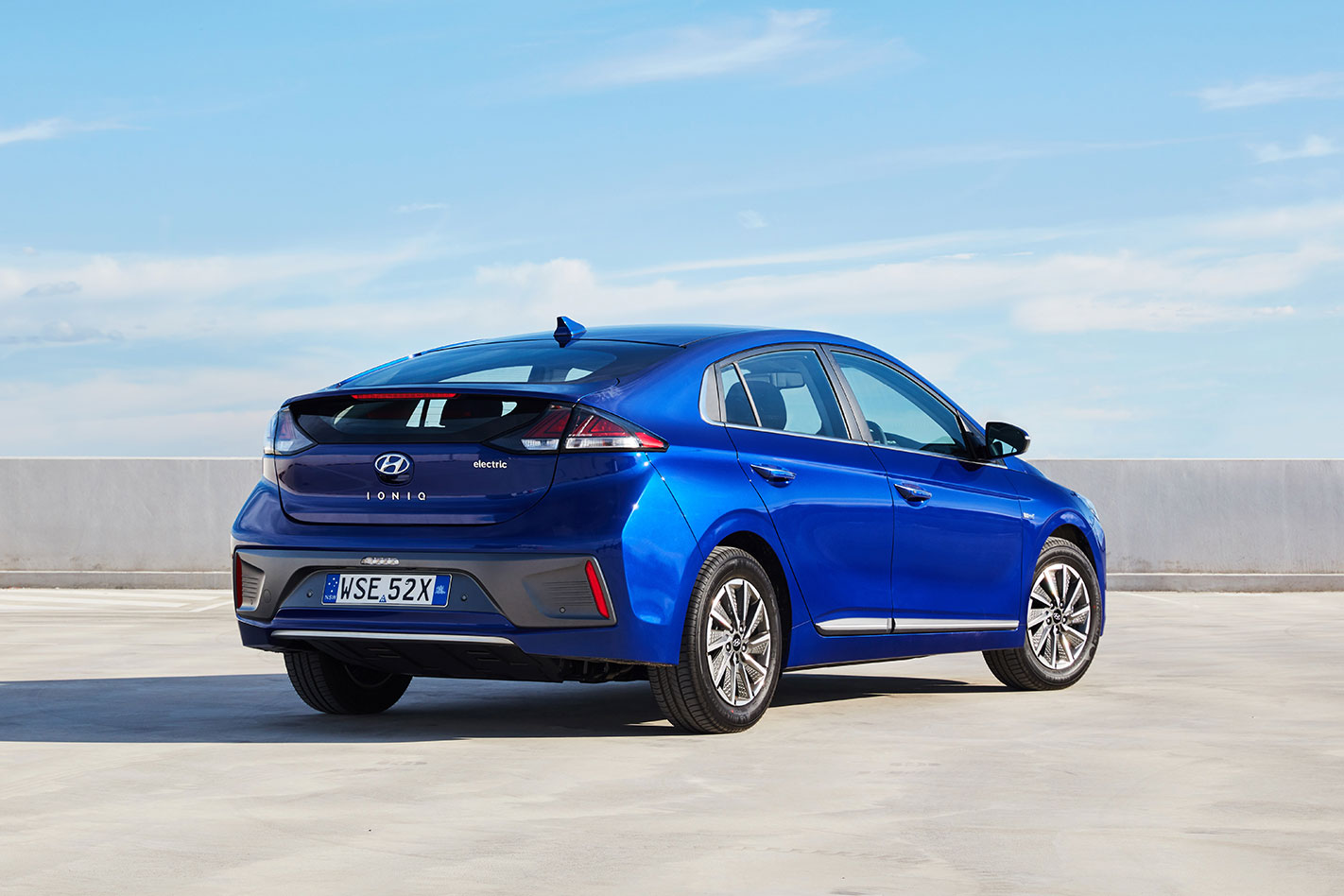
All of which may be sufficient to shift the potential IONIQ EV’s buyer’s response from “Hmmm, not quite” to “Yep, I can live with that.”
Those who do decide they can live without the internal combustion of the two other models will also be rewarded with a car that drives appreciably better when it doesn’t have a 1.6-litre four-pot lump stuck in the nose. Our EV tester was the Elite, which benefits from chubbier 16-inch rubber instead of the 17s on the Premium, but that change wasn’t solely responsible for the greater general handling cohesion compared to the Plug-in.
For that, we can only assume the more favourable weight distribution marries with greater harmony to the damper tune, because the IONIQ EV manages to quell a fair bit of the wallow and pitch of the Plug-in (and presumably the Hybrid.) Despite the fact it’s the only one of the three with a torsion-beam rear suspension, it’s actually a mostly pleasant thing to drive in the context for which it’s designed, given the immediacy of the torque delivery, low NVH levels and improved dynamics.
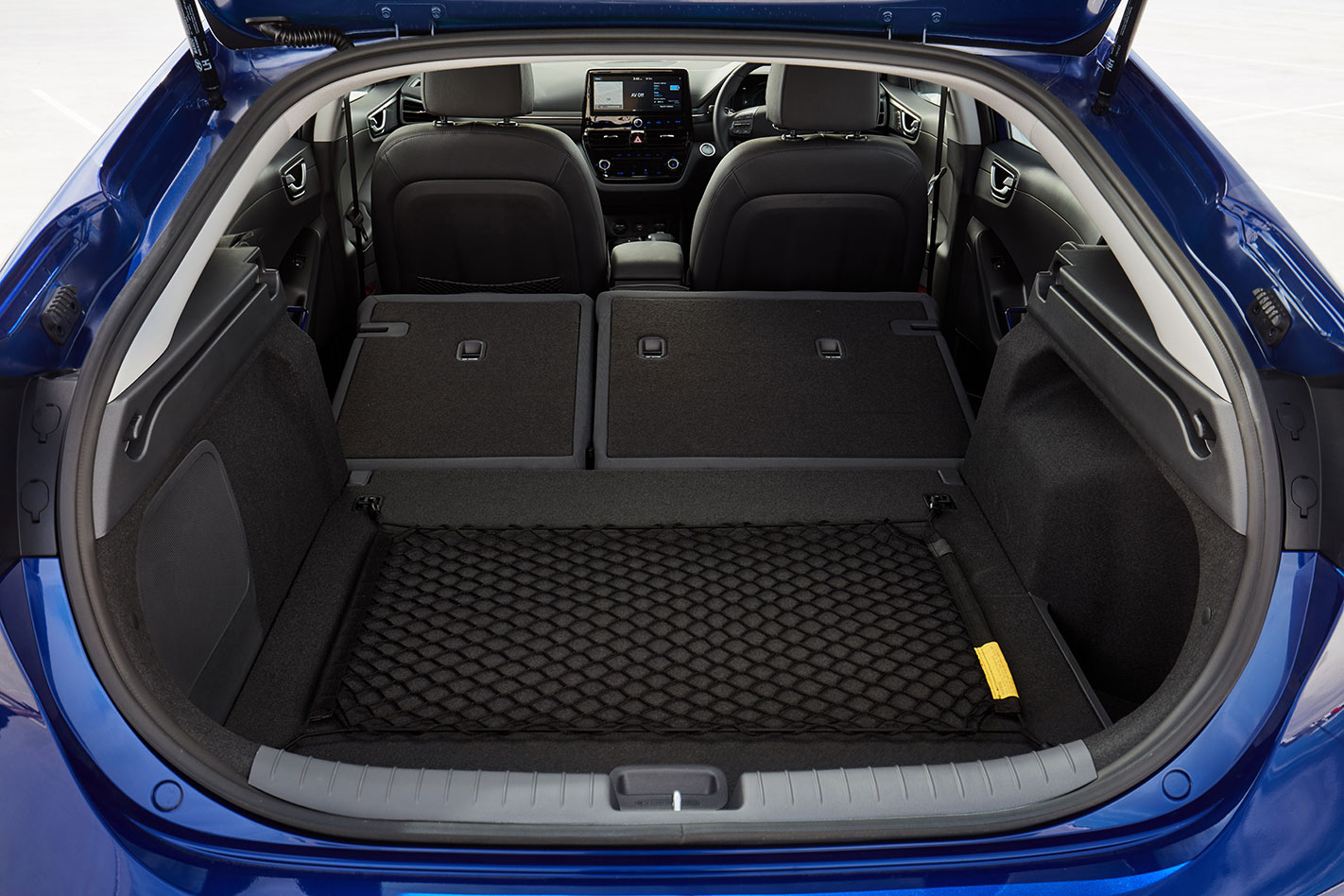
Factor in the appreciable lift to the cabin presentation, vastly upgraded multimedia, now with a 10.25-inch touchscreen and better functionality, and all three IONIQs make a stronger case, despite the price rises. But for us, it’s the Elite EV, at $48,490, that is now the most persuasive.
PRICE AND SPECS
Model: Hyundai IONIQ Electric Elite Motor: Permanent magnet synchronous Battery: 38kWh lithium-ion Max power: 100kW Max torque: 295Nm Transmission: single-speed reduction gear Weight: 1527kg 0-100km/h: 8.5sec (estimated) Economy: 12.8kWh/100km (estimated) Price: $48,490 On sale: Now
Things we like
- Much improved interior design and materials
- Comprehensive safety and convenience equipment
- Less suspension noise
- Improved range and performance of Electric model
Not so much
- Steering feel
- Dynamics of Hybrid and PHEV models adequate only
- Prices are up


